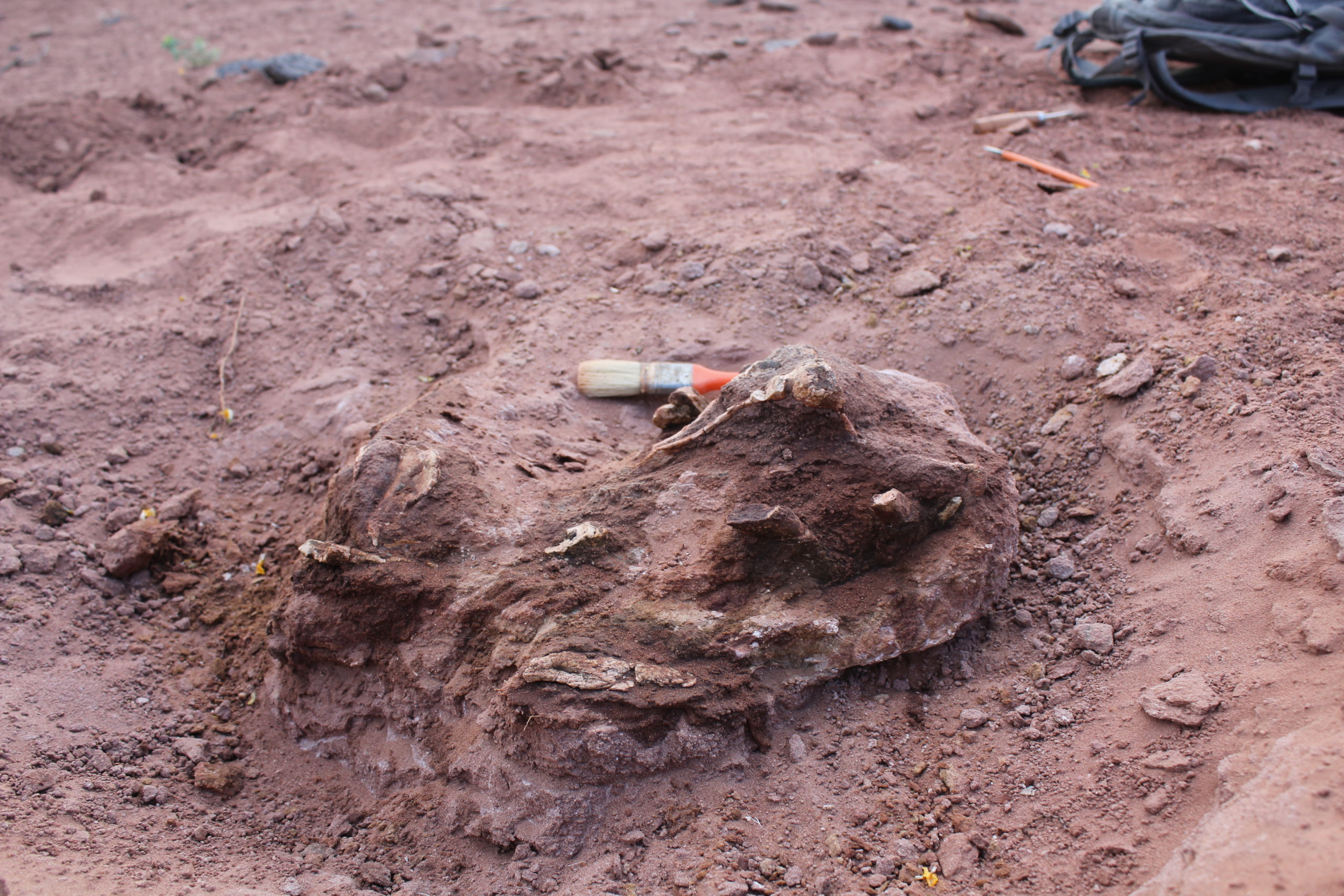Eighty million years ago, a large dinosaur curled up and died in what is today western Argentina. The dinosaur was a bipedal, meat-eating predator from the little-known family Abelisauridae, which could grow to nearly 9.14 m long and are characterised by their stubby, rugged skulls. This particular abelisaur, dubbed Llukalkan aliocranianus, is a newly identified species.
The research describing the new theropod fossil is published today in the Journal of Vertebrate Paleontology. The dinosaur’s scientific name speaks to its ferocious place in the Cretaceous hierarchy — the animal was likely an apex predator — and its interesting skull construction, which suggested that in life it had a mottled surface with bulges, similar to the head of gila monsters today. That sort of skull shape was typical of abelisaurs.
[referenced id=”1147829″ url=”https://gizmodo.com.au/2019/02/newly-discovered-spiked-dinosaurs-from-south-america-look-like-creatures-from-no-mans-sky/” thumb=”https://gizmodo.com.au/wp-content/uploads/2019/02/06/fujqstazlejmyclnalrb.png” title=”Newly Discovered Spiked Dinosaurs From South America Look Like Creatures From ‘No Man’s Sky’” excerpt=”Paleontologists in Argentina have uncovered a dinosaur unlike anything ever seen before. Alive some 140 million years ago, these majestic herbivores featured long, forward-pointing spikes running along their necks and backs. These spikes may have served a defensive role, but their exact purpose now presents a fascinating new mystery.”]
“Some say that the shape of the head and jaws could have helped to bite the prey, while the horns could have been used to bump into each other,” said Federico Gianechini, a paleontologist at Argentina’s National University and lead author of the new paper, in an email. “It is possible that there was a sexual differentiation and that only the males had horns and that they fought each other, as many horned mammals do today.”
There are various conjectures about the evolutionary development of abelisaurs, but one cranial characteristic set even L. aliocranianus apart from its brethren: a perplexing gap behind its earhole.

“It has a cavity or sinus related to the pneumatic system (a system of sacs and diverticula filled with air) behind the ear that other abelisaurids did not have,” Gianechini said. “This feature could have given this species different auditory capacity, possibly a greater hearing range.”
If the dinosaur indeed had better hearing, that would’ve improved its performance in what was a landscape crowded with predators. During the late Cretaceous, Patagonia was part of Gondwana, a supercontinent that hosted 10 other species of abelisaur. Another species from the family was found less than half a mile from the Llukalkan specimen.
[referenced id=”1675280″ url=”https://gizmodo.com.au/2021/02/dinosaurs-like-t-rex-were-more-tyrannical-than-we-realised-new-research-suggests/” thumb=”https://gizmodo.com.au/wp-content/uploads/2021/02/26/idfyeihuub5iwaozokxm-300×169.jpg” title=”Dinosaurs Like T. Rex Were More Tyrannical Than We Realised, New Research Suggests” excerpt=”Large meat-eating dinosaurs took on the role of multiple species while growing up, resulting in a shocking lack of ecological diversity during the Mesozoic, according to new research.”]
“These were some of the top predators in South America during the Late Cretaceous and looked quite different from the tyrannosaurs that roamed North America at the same time,” said Victoria Arbour, a paleontologist at the Royal BC Museum in Canada who was unaffiliated with the recent paper. “Llukalkan is interesting because it preserves some very nice skull material that shows it might have had some unique hearing adaptations compared to other abelisaurs, which goes to show how much more we have to learn about the evolution and biology of these odd dinosaurs!” she wrote in an email.
Going forward, the team in Argentina will continue to look for other abelisaurs to better understand the diversity of the dinosaurs. While they do that, I’m going to sit back and be grateful that these beasts died out millions of years before they had a shot at eating us.
